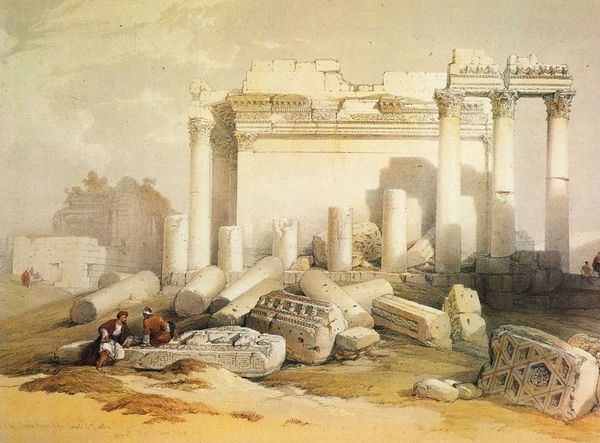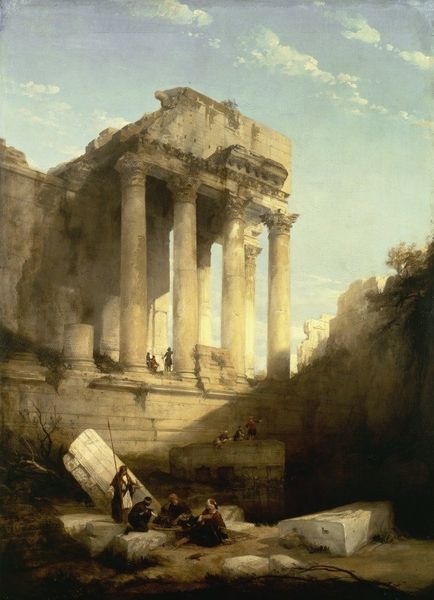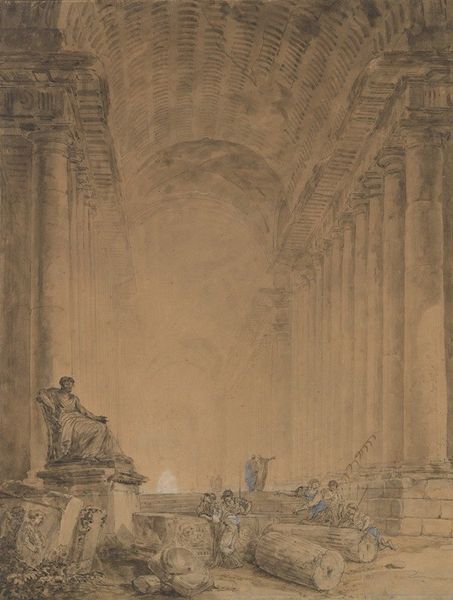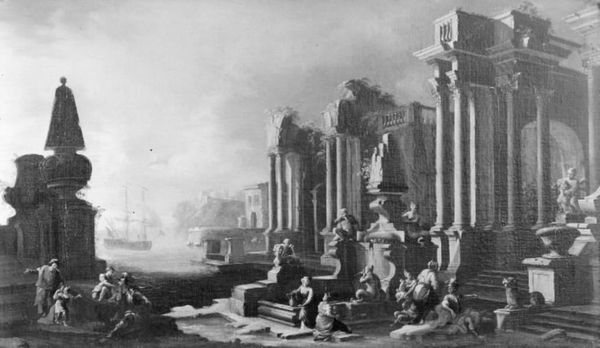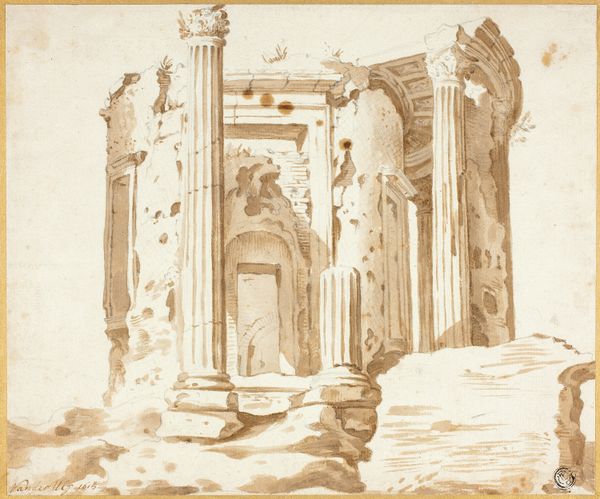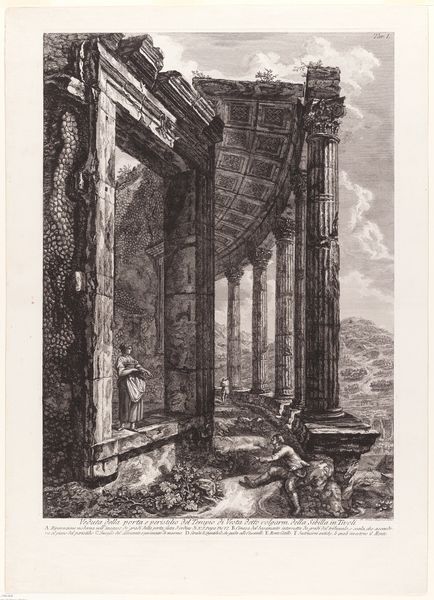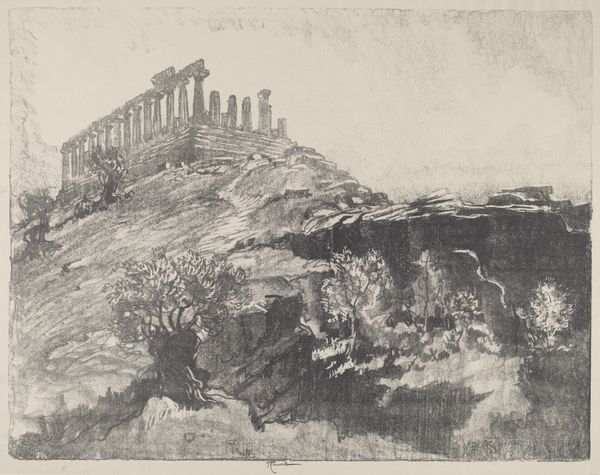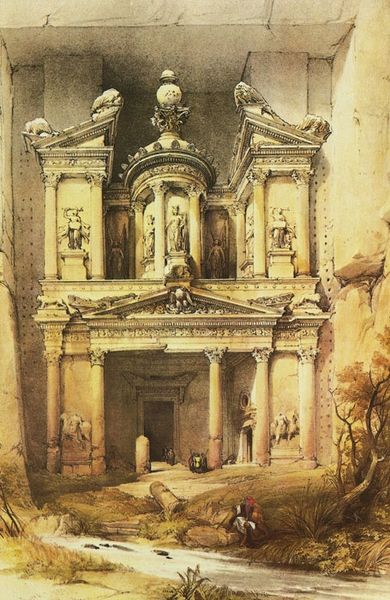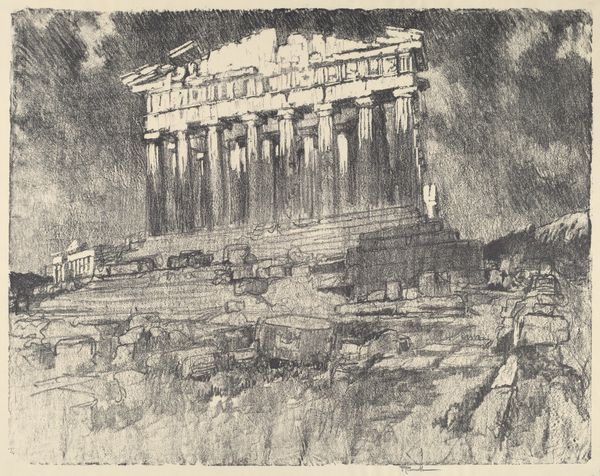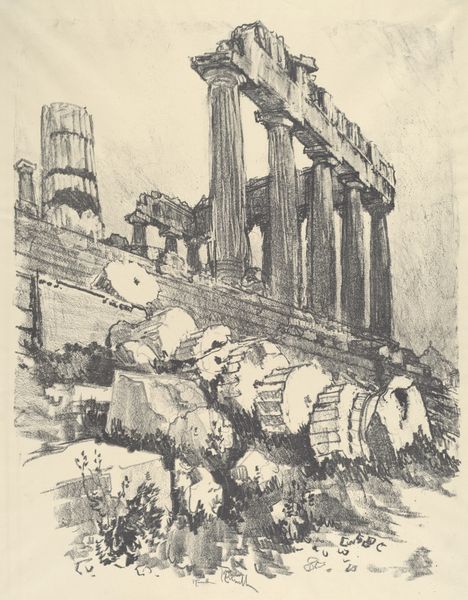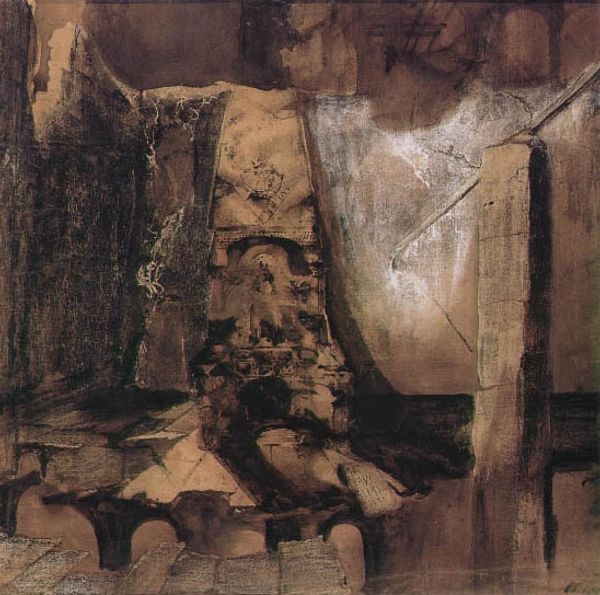
mixed-media, painting, watercolor, architecture
#
mixed-media
#
painting
#
landscape
#
watercolor
#
column
#
romanticism
#
arch
#
orientalism
#
watercolour illustration
#
history-painting
#
mixed media
#
architecture
Copyright: Public domain
Editor: This watercolor, attributed to David Roberts, presents what's described as "Baalbek: Remains of the Western Portico of the Temple of Jupiter." It evokes a strong sense of past grandeur, and present decay. What sort of cultural symbols and imagery resonate most strongly for you in this piece? Curator: The ruins themselves are powerful symbols. They speak of the transience of empires and the inevitable decay of even the most monumental achievements. Note the figures at the base. Roberts positions them in distinctly Orientalist garb, likely acting as witnesses *for* a Western audience. They emphasize the 'otherness' of the place, the exotic allure of a fallen civilization. Doesn't the overall paleness remind you of the passage of time, how memory itself fades? Editor: I see what you mean about the figures acting as a point of view for the viewer. The color palette definitely has a bleaching effect that lends a feeling of something ancient. Curator: Consider also Jupiter, a symbol of Roman power and authority, juxtaposed with the crumbling temple. This hints at cultural memory, the layers of history, doesn’t it? How Rome's own symbols came to exist, layered onto existing spaces, only to now be another layer itself. Look at how Roberts rendered light – this feels like an exercise in remembrance more than objective architectural record. Does it trigger in you any memories or sentiments? Editor: Definitely a feeling of looking back and re-evaluating what was and is no longer. Curator: Indeed, Roberts uses ruins to prompt reflection on the relationship between present and past. The remnants function almost like prompts to interrogate what values truly last through time. Editor: That’s a helpful way to put it. I hadn’t considered the ruins acting as prompts. I’ll definitely carry that perspective forward!
Comments
No comments
Be the first to comment and join the conversation on the ultimate creative platform.
